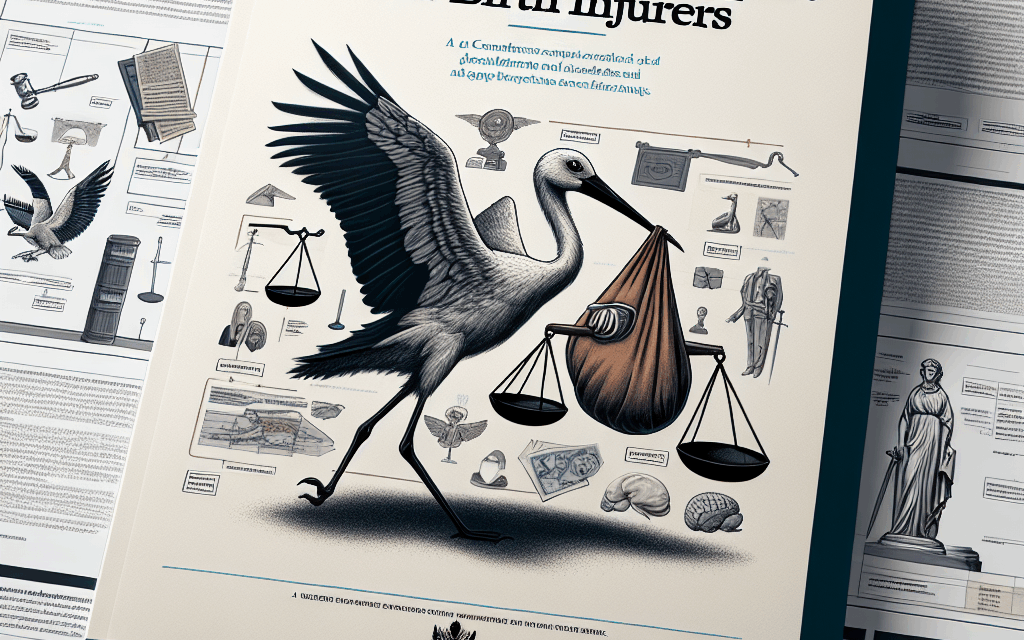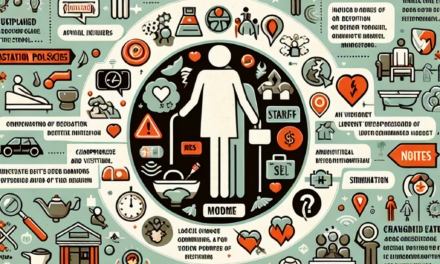Navigating Legal Support for Birth Injuries: A Comprehensive Guide
Birth injuries can have profound and lasting effects on both the child and the family. When these injuries occur due to medical negligence, understanding the legal avenues available for seeking justice and compensation becomes crucial. This comprehensive guide aims to navigate the complex landscape of legal support for birth injuries, providing insights into the types of birth injuries, the legal process, the role of medical experts, and more.
Understanding Birth Injuries
Birth injuries refer to physical harm that occurs to a newborn during the process of labor and delivery. These injuries can range from minor bruising to severe conditions that may affect the child’s quality of life. Understanding the types of birth injuries is essential for parents seeking legal recourse.
Types of Birth Injuries
Birth injuries can be categorized into several types, each with its own causes and implications:
- Cerebral Palsy: A neurological disorder caused by brain damage during birth, often due to oxygen deprivation.
- Brachial Plexus Injury: Damage to the network of nerves controlling arm and hand movement, typically caused by excessive pulling during delivery.
- Fractures: Broken bones, particularly the clavicle, can occur during difficult deliveries.
- Caput Succedaneum: Swelling of the soft tissues on a newborn’s head, usually resolving without treatment.
- Cephalohematoma: Accumulation of blood between the skull and the periosteum, often resulting from the use of forceps.
Each type of injury has specific causes, and understanding these can help in determining whether negligence occurred. For instance, cerebral palsy may arise from a failure to monitor fetal distress, while brachial plexus injuries may result from improper delivery techniques.
Statistics on Birth Injuries
According to the Centers for Disease Control and Prevention (CDC), approximately 1 in 1,000 live births results in a birth injury. While many injuries are minor and resolve quickly, others can lead to lifelong disabilities. A study published in the journal Pediatrics found that about 10% of children with cerebral palsy were born with a birth injury, highlighting the importance of understanding the legal implications of such conditions.
The Legal Process for Birth Injury Claims
When parents suspect that a birth injury was caused by medical negligence, they may consider pursuing a legal claim. The legal process can be complex and requires careful navigation.
Steps to Take After a Birth Injury
Here are the essential steps parents should take if they believe their child has suffered a birth injury due to negligence:
- Document Everything: Keep detailed records of medical treatments, diagnoses, and any conversations with healthcare providers.
- Consult a Medical Professional: Seek a second opinion from a qualified medical expert to understand the nature of the injury.
- Contact a Birth Injury Lawyer: Find an attorney who specializes in birth injury cases to discuss potential legal options.
- Gather Evidence: Collect all relevant medical records, photographs, and witness statements that may support your case.
- File a Claim: Your attorney will help you file a claim within the statute of limitations, which varies by state.
Each of these steps is crucial in building a strong case. For example, documenting everything can provide a timeline of events that may be critical in proving negligence.
Understanding Negligence in Birth Injury Cases
To succeed in a birth injury claim, it is essential to establish that negligence occurred. Negligence in medical practice typically involves four elements:
- Duty of Care: The healthcare provider had a responsibility to provide care that meets accepted medical standards.
- Breach of Duty: The provider failed to meet that standard, resulting in harm.
- Causation: The breach of duty directly caused the birth injury.
- Damages: The injury resulted in measurable damages, such as medical expenses or loss of quality of life.
For instance, if a doctor fails to monitor fetal heart rates during labor and the baby suffers oxygen deprivation leading to cerebral palsy, this may constitute negligence. Establishing these elements often requires expert testimony and thorough investigation.
The Role of Medical Experts in Birth Injury Cases
Medical experts play a pivotal role in birth injury cases, providing the necessary evidence to support claims of negligence. Their insights can be instrumental in both establishing the standard of care and demonstrating how it was breached.
Types of Medical Experts Involved
Several types of medical experts may be involved in a birth injury case:
- Obstetricians: Specialists in childbirth who can testify about standard practices during labor and delivery.
- Pediatricians: Experts in child health who can assess the long-term effects of birth injuries.
- Neurologists: Specialists who can evaluate neurological damage and its implications for conditions like cerebral palsy.
- Forensic Experts: Professionals who can analyze medical records and provide an independent assessment of the case.
- Rehabilitation Specialists: Experts who can discuss the necessary therapies and interventions for affected children.
For example, an obstetrician may testify that the standard of care requires continuous fetal monitoring during high-risk deliveries. If they determine that the monitoring was inadequate, this could support a claim of negligence.
The Importance of Expert Testimony
Expert testimony is often critical in establishing the link between negligence and the birth injury. Courts rely on these experts to explain complex medical concepts in a way that juries can understand. A well-prepared expert can make a significant difference in the outcome of a case.
In one notable case, a family sued a hospital after their child was diagnosed with cerebral palsy. The expert testimony provided by a neurologist highlighted how the hospital’s failure to monitor the mother’s blood pressure during labor led to oxygen deprivation, ultimately resulting in the child’s condition. The jury awarded the family significant damages based on this testimony.
Compensation for Birth Injuries
Families affected by birth injuries often face substantial medical expenses, ongoing care needs, and emotional distress. Understanding the types of compensation available can help families navigate their legal options.
Types of Damages Available
In birth injury cases, families may be entitled to various types of damages, including:
- Medical Expenses: Compensation for current and future medical costs related to the injury.
- Lost Wages: Reimbursement for lost income if a parent has to take time off work to care for the child.
- Pain and Suffering: Compensation for the emotional distress experienced by the child and family.
- Rehabilitation Costs: Coverage for therapies and interventions needed for recovery.
- Loss of Consortium: Compensation for the impact on family relationships due to the injury.
For instance, if a child requires ongoing physical therapy due to a birth injury, the family can seek compensation for those future costs. In some cases, damages can reach millions of dollars, especially when lifelong care is required.
Factors Influencing Compensation Amounts
The amount of compensation awarded in birth injury cases can vary widely based on several factors:
- Severity of the Injury: More severe injuries typically result in higher compensation amounts.
- Long-Term Prognosis: If the child will require lifelong care, this can significantly increase the compensation sought.
- Jurisdiction: Different states have varying laws regarding caps on damages and how cases are handled.
- Evidence of Negligence: Strong evidence linking negligence to the injury can lead to higher settlements or jury awards.
- Insurance Coverage: The amount of insurance coverage held by the medical provider can also impact the compensation available.
In one case, a family received a settlement of $5 million after proving that their child’s cerebral palsy was caused by a failure to monitor fetal distress during labor. The settlement covered medical expenses, rehabilitation, and pain and suffering.
Finding the Right Legal Support
Choosing the right legal representation is crucial for families navigating birth injury claims. The right attorney can make a significant difference in the outcome of a case.
Qualities to Look for in a Birth Injury Lawyer
When searching for a birth injury attorney, consider the following qualities:
- Experience: Look for attorneys with a proven track record in handling birth injury cases.
- Specialization: Choose a lawyer who specializes in medical malpractice and birth injury claims.
- Reputation: Research reviews and testimonials from previous clients to gauge their satisfaction.
- Communication Skills: Ensure the attorney communicates clearly and is responsive to your questions.
- Contingency Fees: Many birth injury lawyers work on a contingency fee basis, meaning they only get paid if you win your case.
For example, an attorney with extensive experience in birth injury cases will be familiar with the nuances of medical malpractice law and can effectively navigate the complexities of your case.
The Initial Consultation
The initial consultation is an opportunity for families to discuss their case with a potential attorney. During this meeting, families should:
- Present Evidence: Share all relevant medical records and documentation related to the birth injury.
- Ask Questions: Inquire about the attorney’s experience, approach to cases, and potential outcomes.
- Discuss Fees: Understand the fee structure and any costs associated with pursuing the case.
- Gauge Comfort Level: Ensure you feel comfortable with the attorney and confident in their ability to represent your interests.
A successful initial consultation can set the tone for a productive attorney-client relationship. For instance, if an attorney demonstrates empathy and a clear understanding of the legal process, families may feel more at ease moving forward with their case.
Conclusion
Navigating legal support for birth injuries is a complex and often emotional journey for families. Understanding the types of birth injuries, the legal process, the role of medical experts, compensation options, and how to find the right legal support is essential for seeking justice and securing the necessary resources for care.
Key takeaways from this guide include:
- Birth injuries can have significant long-term effects, and understanding their types is crucial for legal claims.
- The legal process involves several steps, including documenting evidence and consulting with medical professionals.
- Medical experts play a vital role in establishing negligence and supporting claims.
- Compensation can cover a range of damages, and understanding the factors influencing amounts is essential.
- Choosing the right legal representation can significantly impact the outcome of a birth injury case.
By being informed and proactive, families can navigate the legal landscape effectively, ensuring that their child receives the care and support they need for a better future.





